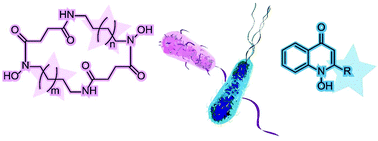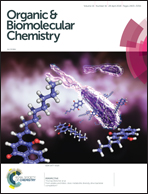From pirates and killers: does metabolite diversity drive bacterial competition?
Abstract
Bacteria engage in numerous collaborative and competitive interactions, which are often mediated by small molecule metabolites. Bacterial competition involves for example the production of compounds that effectively kill or inhibit growth of their neighbours but also the secretion of siderophores that allow securing the essential and fiercely embattled resource of ferric iron. Yet, the enormous diversity of metabolites produced has remained puzzling in many cases. We here present examples of both types of competition from our recent work. These include the human pathogen Pseudomonas aeruginosa producing HQNO derived 4-quinolone N-oxides varying in chain length and saturation as antibiotics against Staphylococcus aureus and two marine bacteria, Shewanella algae and Vibrio alginolyticus competing for iron acquisition via homodimeric and heterodimeric cyclic hydroxamate siderophores. In each case, bacteria not only produce one but a whole set of closely related metabolites encoded by a single biosynthetic gene cluster. Our recent work has demonstrated that individual metabolites can have significantly different biological activities and we speculate on the reasons for maintaining this metabolite diversity from the perspective of interspecies competition.

- This article is part of the themed collection: Chemical Biology in OBC


 Please wait while we load your content...
Please wait while we load your content...